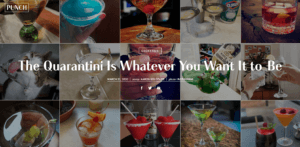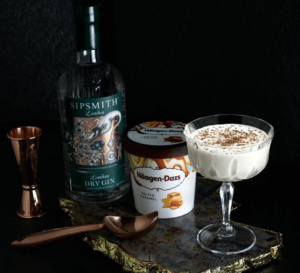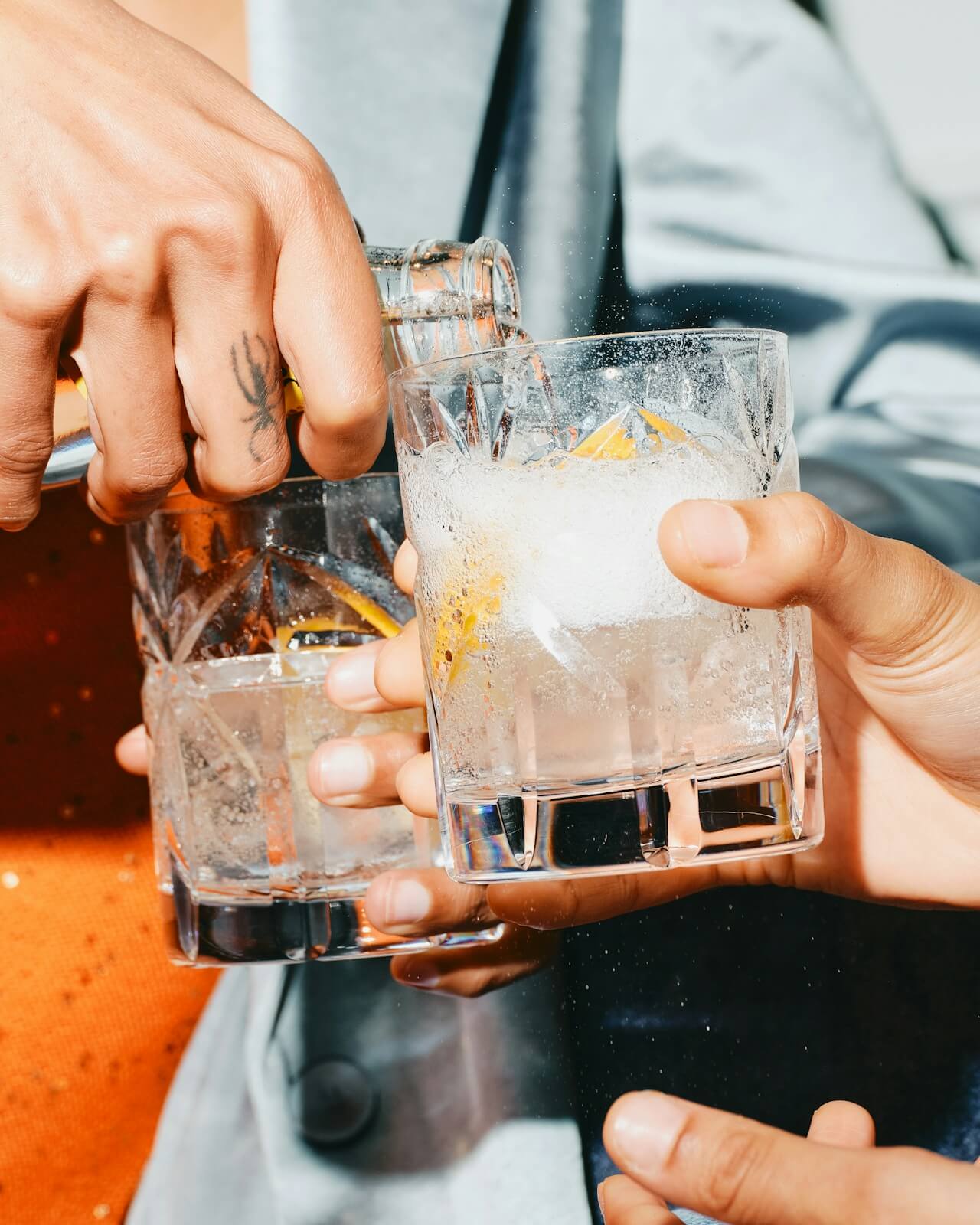Our Thoughts
Quarantini o’clock The resurgence of cocktail hour at home
Throughout lockdown everyone from celebrities to our own neighbours have been revealing new skills and performances from the comfort of home, and some in particular have captured the general zeitgeist. The actor Stanley Tucci, for example, re-became a star with his at-home cocktail making instructional videos. The popularity of these videos, among many others, points to a revitalization of the until-now waning home cocktail hour as consumers turn to their home bars for Zoom-call “quarantinis.” It’s likely no coincidence that cocktail culture still refers back to speakeasy cocktails and aesthetics during American prohibition, when social life and hedonistic fun were forced behind closed doors, another lockdown of sorts, and that we now turn back to elaborate concoctions to get us through being ‘alone together’.
A sense of mystery, adventure, and exoticism was key to the rise of early cocktail culture, such as the early 20th century popularity of Tiki bars. This sense of adventurous cosmopolitanism has carried through the decades, from James Bond’s miraculous ability to find a dry vodka martini wherever he goes, to contemporary gin bars serving increasingly exploratory and colourful combinations of unusual botanicals and tonics. Today the transportive power of a good cocktail remains as strong as ever. Articles suggesting cocktails to make at home are often accompanied with descriptions of the holiday destinations the drink can transport you to through flavour – a Garibaldi or Pineapple Mojito may be the closest we can get to experiencing an Italian seaside or a tropical resort any time soon, and takes us out of the everyday in a way that opening a beer on the couch cannot.

In addition to this, there is an important element of ritual and transformation; the expert muddling, pouring, mixing, and shaking that takes time and focus to transform staples from the fridge, pantry, and drinks cabinet into a unique sensory experience. This time-bound ritual, more or less at five o’clock, creates a demarcation of work from leisure that allows us to create a separation between the hours of productivity and work and at-home sociability and relaxation, even if both take place on the same sofa. Even as lockdown restrictions ease and we gain a bit more separation from our homes, it seems likely that social life will resume as small in-home gatherings, featuring many of these newly-developed home bars, before bar and restaurant outings go back to pre-Covid levels.
This raises an interesting question for drinks brands as we move into what would otherwise have been the tinned pre-mixed drinks season. While the drop in trade sales has hurt many drinks brands, they have also found creative ways to engage with consumers on social media and bring the bar experience into homes. Many are helping us re-live our favourite pre-lockdown experiences through providing ingredients, tutorials, or kits to learn to make those drinks at home. Soho House, for example, sells kits for some of its signature drinks (and drinkware) through the Soho Home line, allowing members to re-create the House experience at home, and bringing a wider audience to the brand and its homeware line that can be maintained beyond lockdown. Many brands have turned to social media engagement to educate consumers and encourage experimentation with their products. Reyka for example has produced Instagram live cocktail-making tutorials from the homes of some of their brand ambassadors. Sipsmith likewise addresses the need to enjoy and elevate an evening in, and have created recipes specially designed to be enjoyed during lockdown, such as a gin and ice cream concoction ideal for Netflix movie night.

Going forward, however brands can do more for the burgeoning home mixologist population. The joy of an expert mixologist pouring a drink in a bar atmosphere will likely never lose its appeal, but this resurgence of home bartending raises an opportunity for brands to empower consumers to be more creative and exploratory in their own purchases going forward. Brands can look to expand the types of products purchased online and in supermarkets, as consumers venture outside their standard party mixers. Likewise, there is a potential for alternative formats creating a unique experience for the home bartender, and maintaining a distinction between home and bar or restaurant contexts. For now, while we may have all lost track of what day it is, we can be sure it’s five o’clock somewhere and we can celebrate that from the comfort of home.
Isobel Grad, Semiotician

